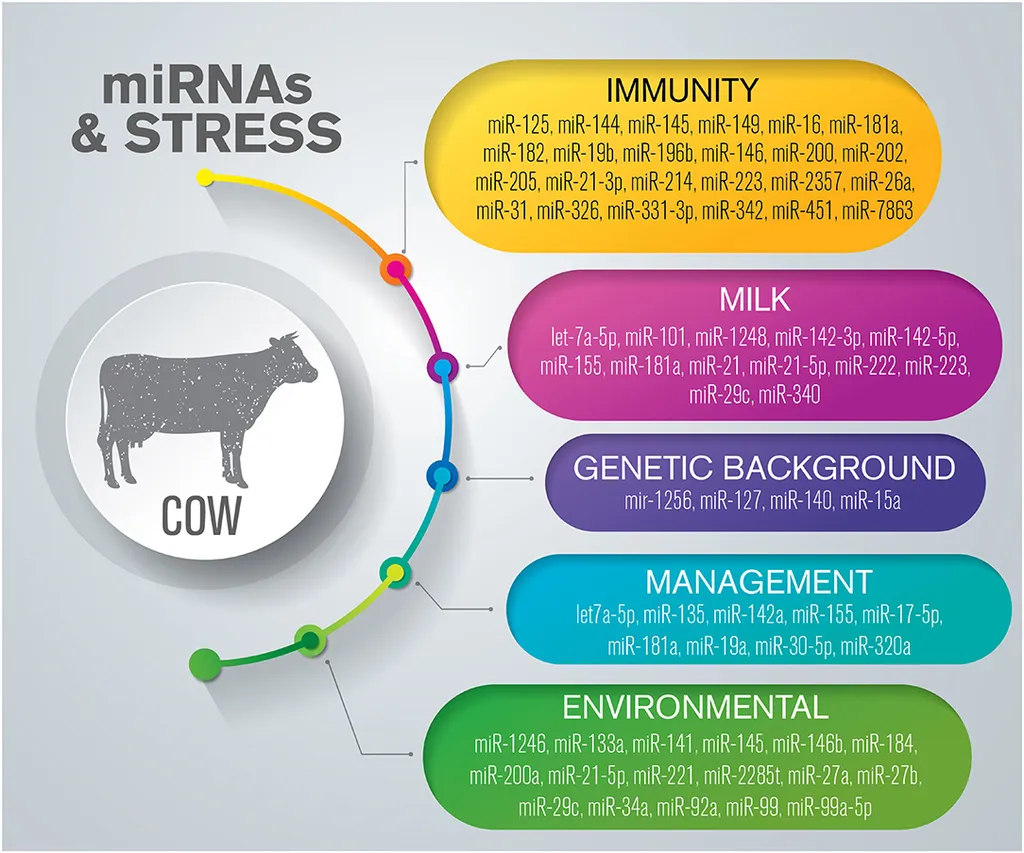In the quest to boost dairy cow fertility and, by extension, agricultural productivity, researchers have uncovered a promising new avenue: microRNAs (miRNAs) tucked within tiny vesicles in cow’s blood plasma. This discovery, published in the *Journal of Extracellular Vesicles* (formerly known as the Journal of Extracellular Biology), could revolutionize how farmers and veterinarians approach reproductive health in livestock.
At the heart of this research is Pevindu Abeysinghe, a scientist at the Centre for Children’s Health Research, School of Biomedical Sciences, Faculty of Health at Queensland University of Technology in Brisbane, Australia. Abeysinghe and his team have identified specific miRNAs that could serve as early indicators of subfertility in dairy cows. “Identifying subfertility markers is critical to the success of fertility intervention strategies,” Abeysinghe explains. “This is particularly important in agriculture, where sustainable farming practices are linked to overall economic performance.”
The study focused on Holstein-Friesian dairy cows, comparing miRNA expression patterns between low fertile (LF) and high fertile (HF) animals. Using small RNA sequencing, the researchers pinpointed 14 differentially expressed miRNAs in plasma small extracellular vesicles (sEVs) between the two groups. One miRNA, miR-181b-2-3p, stood out as significantly more abundant in LF cows compared to HF cows. This finding was validated through qRT-PCR assays, reinforcing the potential of miR-181b-2-3p as a biomarker for subfertility.
The implications of this research are far-reaching. For dairy farmers, early detection of subfertility could mean timely interventions, leading to improved pregnancy rates and overall herd productivity. “Circulating sEV miRNA may contribute, in part, to fertility traits in dairy cows,” Abeysinghe notes. “The association of miR-181b-2-3p with the subfertility phenotype suggests that this miRNA may serve as a putative early indicator of LF status.”
Beyond immediate applications, this research opens doors to deeper understanding of the molecular mechanisms underlying fertility. As Abeysinghe puts it, “The impact of aberrant miRNA expression on fertility-related genes represents a significant knowledge gap.” Filling this gap could pave the way for novel therapeutic strategies and breeding programs aimed at enhancing reproductive success in dairy cows.
In the broader context of agriculture, this study underscores the importance of leveraging advanced biotechnological tools to address longstanding challenges. As the global demand for dairy products continues to rise, ensuring the health and productivity of dairy herds becomes paramount. The discovery of miR-181b-2-3p as a potential biomarker is a step in this direction, offering a glimpse into a future where precision agriculture and molecular diagnostics work hand in hand to sustainably meet the world’s food needs.
As the field of agritech continues to evolve, research like Abeysinghe’s serves as a reminder of the transformative power of scientific inquiry. By unraveling the complexities of miRNA expression and its role in fertility, researchers are not only advancing our understanding of reproductive biology but also laying the groundwork for innovative solutions that could shape the future of agriculture.

